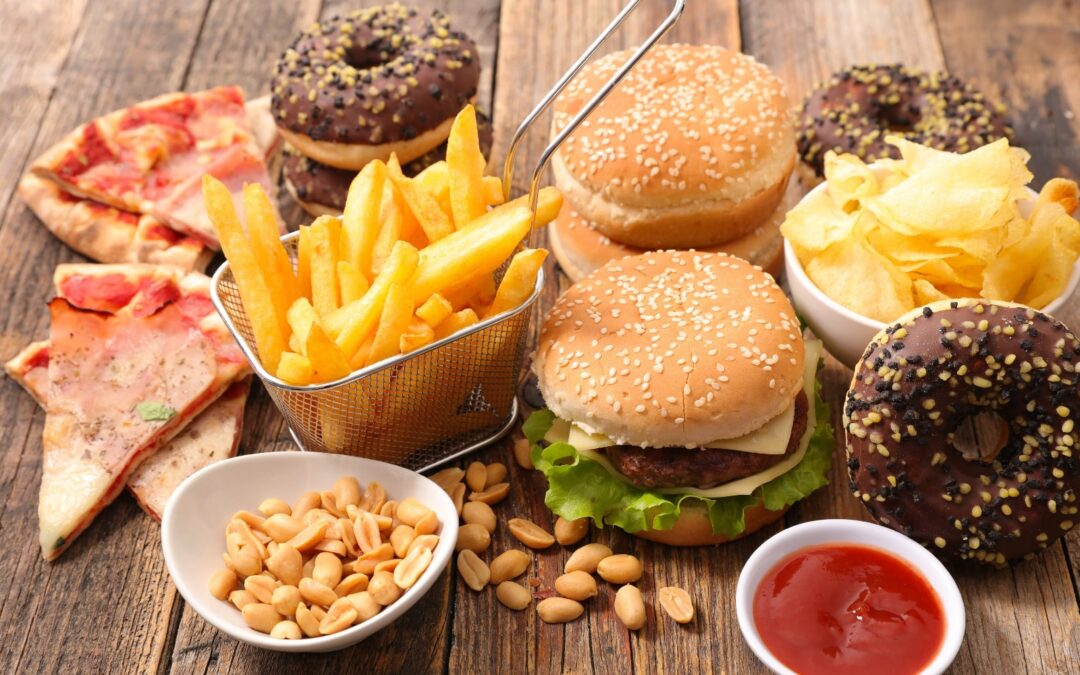You’ve probably heard that trans fats are bad for you. You may even be looking for them on product labels. But what about all the foods that don’t have nutrition labels on them such as French fries or doughnuts? When it comes to these foods, trans fats may be hiding in plain sight. That’s why it is important for you to have a basic understanding of where you are most likely to encounter them. By knowing a little more about trans fats, you can make more informed food choices.
Trans fats, also known as trans fatty acids, come from the hydrogenation of polyunsaturated oils and are used in place of healthier oils in many foods. Say what? Unless you majored in chemistry, that probably makes no sense to you, so allow me to explain.
Naturally occurring vegetable oils such as canola, sunflower, or corn oil don’t contain any trans fats. People have to intentionally create trans fats. So if we know they are bad for our health, why do we do it? There are several reasons all of which serve the needs of the food industry, not individuals.
Trans fats:
- Increase the shelf life of products
- Make vegetable oils more suitable for repeat use in deep fryers
- Decrease product refrigeration requirements
- Are less expensive than butter or lard
Have you ever noticed that butter is stocked in the refrigerated section of grocery stores but packaged baked goods like muffins aren’t? Yet the muffins still resist spoiling. Why? It’s because the kinds of pure vegetable oils and butter we cook with at home are often substituted with trans fats when foods are prepared on a commercial scale.
The trans fats come from adding hydrogen atoms (partially hydrogenating) to unsaturated fats. This process raises the melting point of the fat so that it will be more solid at room temperature and won’t require refrigeration to hold its shape.
Up until 2006, food manufacturers were not required to list trans fats on product labels. Now the FDA requires food manufacturers to list the presence of trans fats. And although the FDA did not set any limits on the amounts of trans fats that are allowed to be present in our foods, they did say that it should be as low as possible.
Experts believe that there are nearly 50,000 products on the market that contain trans fatty acids. While the term trans fats might not specifically appear on the nutrition label, you will see terms such as shortening and hydrogenated or partially hydrogenated oil. The closer to the top of the nutrition label these trans fats appear, the higher the percentage in the product.
Consumer health groups have begun to pressure food manufacturers to remove trans fats from their products altogether. Some have gone so far as to file lawsuits demanding that a particular product be removed from the shelves unless trans fats are eliminated from the ingredients.
While that battle is fought at the highest levels, individuals can take control of their own health by recognizing the types of food likely to contain high levels of trans fat. Stay on the lookout for trans fats in fried foods, in unrefrigerated baked goods and in snack foods such as cookies and crackers.
Bibliography
Dietary Fats Explained MedlinePlus Medical Encyclopedia. (n.d.). Retrieved 9 5, 2011, from MedlinePlus Health Information from the National Library of Medicine: http://www.nlm.nih.gov/medlineplus/ency/patientinstructions/000104.htm
Trans fat. (n.d.). Retrieved 9 5, 2011, from Wikipedia.org: http://en.wikipedia.org/wiki/Trans_fat
Trans fat definition Cholesterol Information Produced by Doctors For Patients Experiencing High Cholesterol Levels. (n.d.). Retrieved 9 5, 2011, from MedTerms.com: http://www.medterms.com/script/main/art.asp?articlekey=11091

